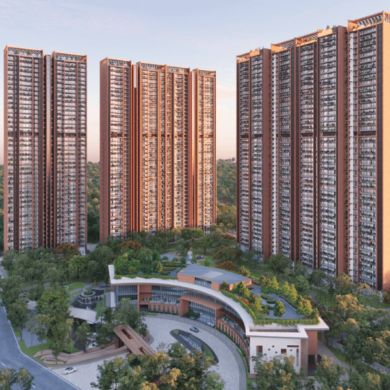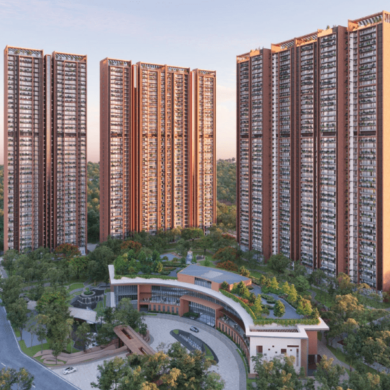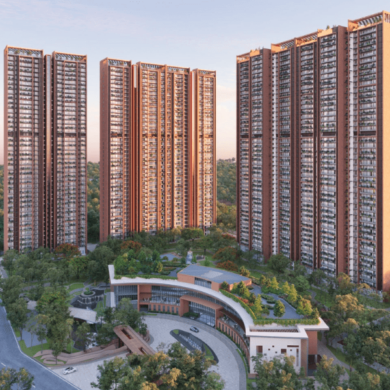
Sustainable living involves adopting eco-friendly practices like using energy-efficient appliances, reducing waste, conserving water, and opting for sustainable transportation. It’s about making choices that protect our planet for future generations while enjoying a healthier, more conscious lifestyle.
“We do not inherit the Earth from our ancestors; we borrow it from our children.” – This is a revolutionary statement by the famous American analyst, Mr. Lester Brown. These words remind us of our responsibility towards future generations, encapsulating the essence of sustainable living.
Sustainable living encompasses a wide range of actions, from how we travel, eat, live, consume and conserve energy to how we dispose of waste. In today’s world, where the impacts of climate changes are increasingly undeniable, the significance of sustainable living cannot be overstated. Through a collection of ideas, strategies, and innovations, we aim to inspire and guide you toward making more environmentally friendly choices.
Table of Contents
What is Sustainable Living?
Sustainable living is a lifestyle that minimises one’s environmental impact and fosters social responsibility. It embodies the principle of living in harmony with our planet, making conscious choices that reduce the consumption of natural resources, minimise waste, and lower carbon emissions.
Fundamentally, sustainable living aims to fulfil our present needs without hindering future generations from satisfying theirs. This means adopting practices and innovations that promote ecological balance, ensure equitable access to resources, and support the well-being of all communities.
Understanding Sustainable Living
Understanding sustainable living involves adopting practices and lifestyles that aim to meet the needs of the present without compromising the ability of future generations to meet their own needs. It encompasses various aspects such as minimizing waste, conserving natural resources, reducing carbon footprint, and fostering social equity.
-
Reducing Environmental Impact:
This is a fundamental principle of sustainable living. This involves a commitment to minimising one’s ecological footprint through various means. By adopting measures such as recycling, composting, and reutilising items, people can significantly reduce the amount of waste that reaches landfills, thereby preserving natural resources and mitigating pollution.
The adoption to renewable energy sources like solar and wind power, along with selecting sustainable transportation methods, is vital for decreasing our dependence on fossil fuels and reducing the carbon emissions that are a major factor in climate change.
-
Conserving Resources:
This emphasises the importance of using natural resources wisely and efficiently. Water conservation techniques, such as installing low-flow fixtures and harvesting rainwater, can significantly reduce water usage in households and communities, preserving this vital resource for future needs.
By improving home insulation, using energy-efficient appliances, and turning off electronics when not in use, individuals can reduce energy consumption, save on utility bills, and reduce greenhouse gas emissions.
-
Promoting Social Responsibility:
It involves recognising the interconnectedness between our actions and the well-being of our global community. Sustainable living practices ensure fairness and equity, allowing everyone access to clean air, water, and a safe environment.
This principle encourages supporting fair trade and ethical companies, engaging in community service and advocacy for environmental justice, and considering our choices’ social and environmental impact.
Sustainable Living Practices
-
Energy Efficiency
Smart Thermostats: Install smart thermostats to manage heating and cooling in your home more efficiently. These smart devices adapt to your schedule and preferences, automatically modifying temperatures to conserve energy while you’re sleeping or not at home.
Seal and Insulate: Improve your home’s insulation by sealing leaks around doors and windows and adding insulation to attics and walls. This adjustment lowers the energy needed for heating and cooling, thereby enhancing your home’s comfort and energy efficiency.
Solar Water Heating: Consider installing a solar water heating system. Using solar panels for water heating can markedly diminish energy use compared to conventional electric or gas water heaters.
-
Waste Reduction
Bulk Buying: Purchase food and household products in bulk to reduce packaging waste. Bring your containers to bulk stores to avoid unnecessary packaging.
Electronic Waste Recycling: Properly recycle electronic waste by taking old electronics to designated recycling centres. This helps recover valuable materials and prevents toxic substances from harming the environment.
Composting: Begin composting food remnants and yard debris. This process not only lessens the volume of waste dispatched to landfills but also yields a nutrient-rich, natural fertiliser for your garden.
-
Water Conservation
Low-Flow Water Fixtures: Replace existing showerheads, faucets, and toilets with low-flow models to significantly reduce water usage without sacrificing performance.
Xeriscaping: Landscape with drought-resistant plants and design your garden to minimise water use. Xeriscaping reduces the need for irrigation conserving water while maintaining beautiful outdoor spaces.
Rain Barrels: Set up rain barrels to collect runoff from your roof. Use the collected rainwater to water your garden, lawn, or outdoor plants, conserving potable water.
-
Sustainable Transportation
Telecommuting: Work from home to reduce commute times and vehicle emissions. Telecommuting has become more feasible and accepted, significantly reducing transportation-related energy consumption.
Electric Vehicles: Consider using EVs for daily commutes or errands. They offer a sustainable alternative for shorter distances, combining travelling efficiency with the convenience of electric assistance.
Participate in Car-Sharing Programs: Join car-sharing programs to access a vehicle only when needed, reducing the need to own a car. These programs encourage the efficient use of resources and reduce the number of vehicles on the road.
Sustainable Living: Food Choices
Adopting sustainable food choices plays a pivotal role in both environmental conservation and enhancing personal health. By promoting plant-based diets and reducing meat consumption, individuals can significantly lower their environmental impact and embrace numerous health benefits.
Backing local and organic food production not only aids in diminishing the carbon footprint linked to the transportation of food but also support food security through the utilisation of resources close at hand.
Innovative approaches to sustainability, such as urban farming techniques, the establishment of community gardens, and initiatives aimed at reducing food waste, are transforming how communities think about food production and consumption.
Eco-Friendly Home Design
Home construction and renovation must approach focusing on selecting eco-friendly building materials, such as bamboo, recycled steel, and reclaimed wood, which reduce the environmental impact and offer durability and natural beauty.
Passive design principles play a critical role in this approach, optimising natural light and ventilation to maintain comfortable indoor temperatures, thereby reducing reliance on artificial heating and cooling systems.
Innovation in green building technologies continues to evolve, introducing green roofs that provide natural insulation, reduce rainwater runoff, and lower urban air temperatures. Sustainable insulation options from sheep’s wool or recycled denim offer effective thermal performance while ensuring indoor air quality and environmental friendliness.
Choose eco-friendly paints, free from volatile organic compounds (VOCs), contribute to healthier indoor environments by reducing exposure to harmful chemicals.
Read More: SOBHA’s Commitment to Sustainable Construction Practices
Sustainable Lifestyle Choices
Embracing sustainable lifestyle choices involves a conscious shift towards mindful consumerism, where the impact of every purchase is considered not just on personal convenience but on the environment and society. In the realm of fashion, promoting ethical and sustainable practices is crucial.
This includes choosing garments made from eco-friendly materials, supporting brands that uphold fair labour practices, and opting for quality over quantity to extend the life of clothing items. The fashion industry’s shift towards sustainability is mirrored in the growing popularity of second-hand and vintage shopping, which offers a greener alternative to fast fashion.
Similarly, choosing eco-friendly personal care products and household items reflects a commitment to reducing one’s ecological footprint. From biodegradable toiletries and plastic-free packaging to natural cleaning products and energy-saving gadgets, these green alternatives minimise environmental harm and often offer healthier options for individuals and their families.
Community Engagement and Advocacy
Community engagement and advocacy are pivotal in the quest for a sustainable future, emphasising the power of collective action and the role of community involvement in driving meaningful change. When individuals come together to support sustainability, their combined efforts can have a profound impact on local and global environmental outcomes. This collective approach not only amplifies the message but also fosters a sense of belonging and shared responsibility among community members.
Participation in environmental initiatives, whether through volunteering for tree planting projects, joining clean-up drives, or contributing to conservation efforts, provides numerous ways for individuals to contribute to the health of their local environment.
Similarly, getting involved with local advocacy groups offers directions to influence policy, raise public awareness, and champion sustainable practices within communities. These groups often act as the voice of the community, lobbying for change that aligns with sustainable development goals and environmental protection.
Common Challenges and Barriers
- Perceived High Costs: Many people believe that living sustainably is more expensive than conventional choices, whether it’s buying organic food, eco-friendly products, or investing in renewable energy sources.
- Accessibility and Availability: Not everyone has easy access to sustainable options, whether due to geographical location, limited market choices, or socioeconomic factors.
- Information Overload and Confusion: With so much information available, it can be overwhelming to discern which practices are truly sustainable and which are merely greenwashed.
- Lack of Infrastructure: In many areas, the infrastructure for sustainable living, such as recycling facilities or public transportation, is inadequate or non-existent.
- Cultural and Social Norms: Existing cultural practices and social norms can make it challenging to adopt behaviours that are seen as different or unconventional.
Overcoming Obstacles in Sustainable Living
- Start Small: Focus on making small changes that are manageable and budget friendly. This can include reducing water usage, switching to energy-efficient bulbs, or reducing waste by recycling and composting.
- Educate Yourself and Others: Take advantage of the wealth of resources available online and in communities to educate yourself about sustainable living practices. Knowledge is power, and sharing this knowledge can help shift cultural and social norms.
- Seek Out Sustainable Options: Explore local farmers’ markets, second-hand stores, and community-sharing programs to find more affordable and accessible sustainable choices.
- Advocate for Change: Use your voice to advocate for more sustainable policies and infrastructure in your community, such as improved recycling programs, bike lanes, or public transportation options.
- Leverage Technology: There are numerous apps and online platforms designed to help individuals make more sustainable choices, from tracking your carbon footprint to finding the most eco-friendly products.
Final Thoughts:
Sustainable living is more than just a trend; it’s a transformative journey towards creating a more harmonious relationship with our planet. It’s about making conscious choices that not only benefit our well-being but also protect and preserve the Earth’s precious resources for future generations.
As we’ve explored the various facets of sustainable living, from adopting eco-friendly home designs and making sustainable food choices to engaging with our communities and advocating for change, it’s clear that sustainability is a multifaceted endeavour, ripe with challenges yet abundant in rewards.
FAQs
1. How can I make my home more eco-friendly?
You can make your home more eco-friendly by installing energy-efficient appliances, reducing water consumption, using sustainable materials for construction and furnishings, implementing proper waste management practices, and incorporating renewable energy sources like solar panels.
2. What are 5 things you do at home to be eco-friendly?
5 things you do at home to be eco-friendly are: 1. Turn off lights and appliances when they are not being used 2. Reduce plastic waste by using reusable bags, bottles, and containers 3. Recycle paper, glass, plastic, and other recyclable materials 4. Create nutrient-rich soil for gardening by composting organic waste 5. Choose eco-friendly cleaning products and reduce overall chemical usage
3. How can I be 100% eco-friendly?
You can be nearly 100% eco-friendly by minimising your carbon footprint, using renewable energy sources, reducing waste generation, supporting sustainable practices, and being mindful of your environmental impact in all aspects of life.
4. How can I live greener at home?
You can live greener at home by reducing energy consumption, conserving water, minimising waste, opting for eco-friendly products and materials, supporting local and sustainable businesses, and practising eco-conscious habits in your daily routines.
5. What is eco-friendly in a house?
Eco-friendly features in a house are energy-efficient appliances, LED lighting, low-flow fixtures, eco-friendly building materials (such as bamboo flooring or recycled glass countertops), proper insulation, passive solar design, and renewable energy systems like solar panels or wind turbines.
6. What are eco-friendly ways?
Eco-friendly ways are practices and actions that minimise environmental harm, conserve natural resources, and reduce pollution. These include opting for renewable energy sources, recycling and reusing materials, reducing energy and water consumption, supporting sustainable agriculture, and minimising carbon emissions.
7. What is an eco-friendly lifestyle?
An eco-friendly lifestyle includes making conscious choices and adopting behaviours that prioritise environmental sustainability – such as reducing waste, conserving resources, minimising carbon footprint, supporting eco-conscious products & practices, and promoting biodiversity and ecological balance.
8. What is the most eco-friendly house?
The most eco-friendly houses are those designed and built with sustainable materials, energy-efficient features, and minimal environmental impact.
9. How can we go green?
You can go green by adopting environment-friendly practices such as reducing energy consumption, conserving water, recycling and composting, using eco-friendly products, supporting sustainable initiatives, and advocating for environmental protection and conservation policies.
10. Why should we be eco-friendly?
We should be eco-friendly to protect the environment, preserve natural resources, address climate change, reduce pollution, and create a sustainable future for generations to come. Being eco-friendly also helps improve public health, promote biodiversity, and foster a more equitable and resilient society.










